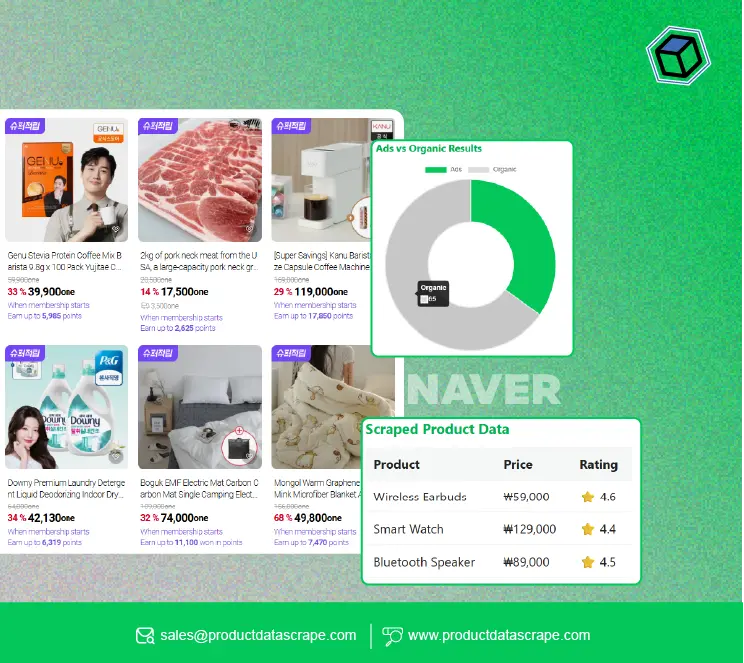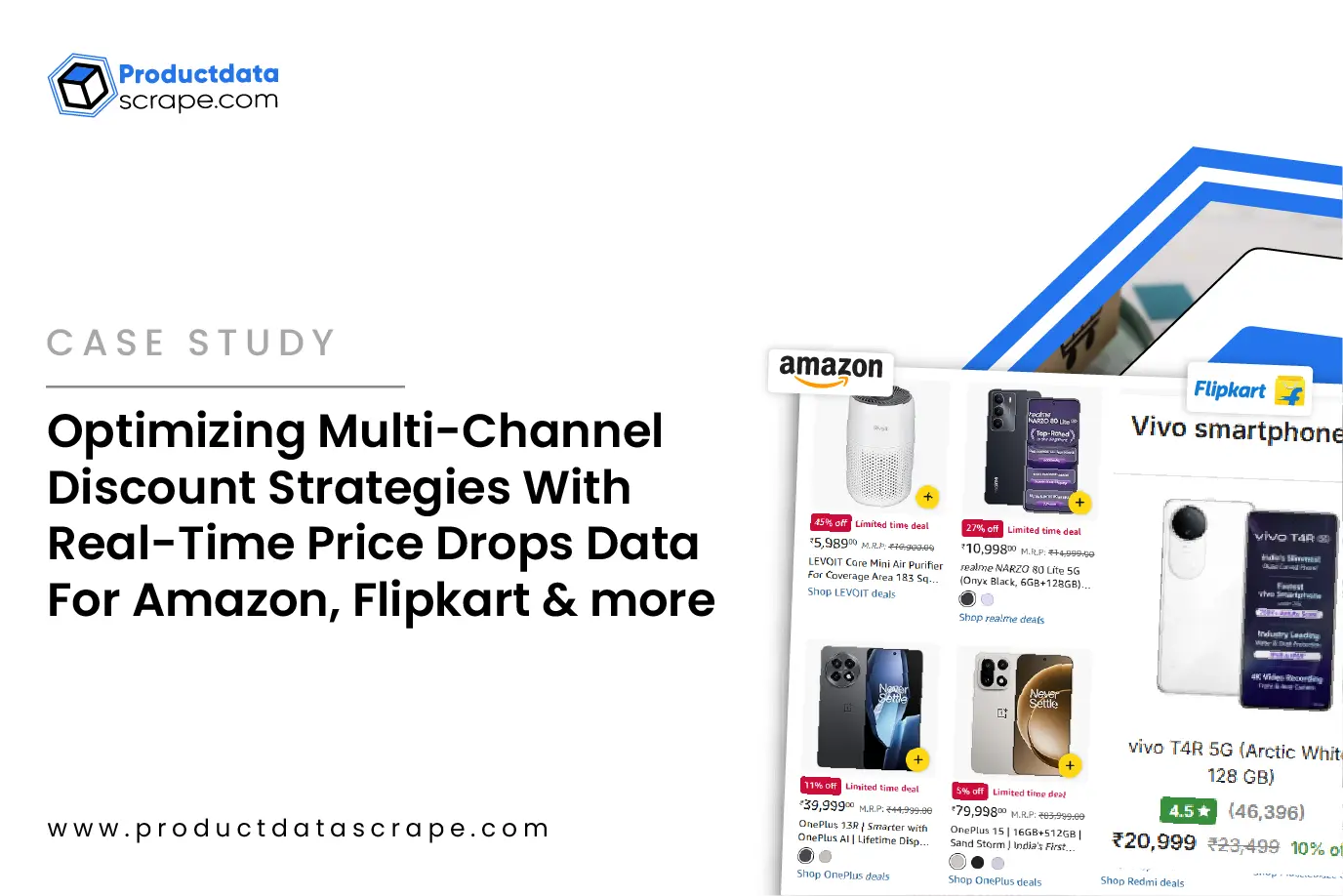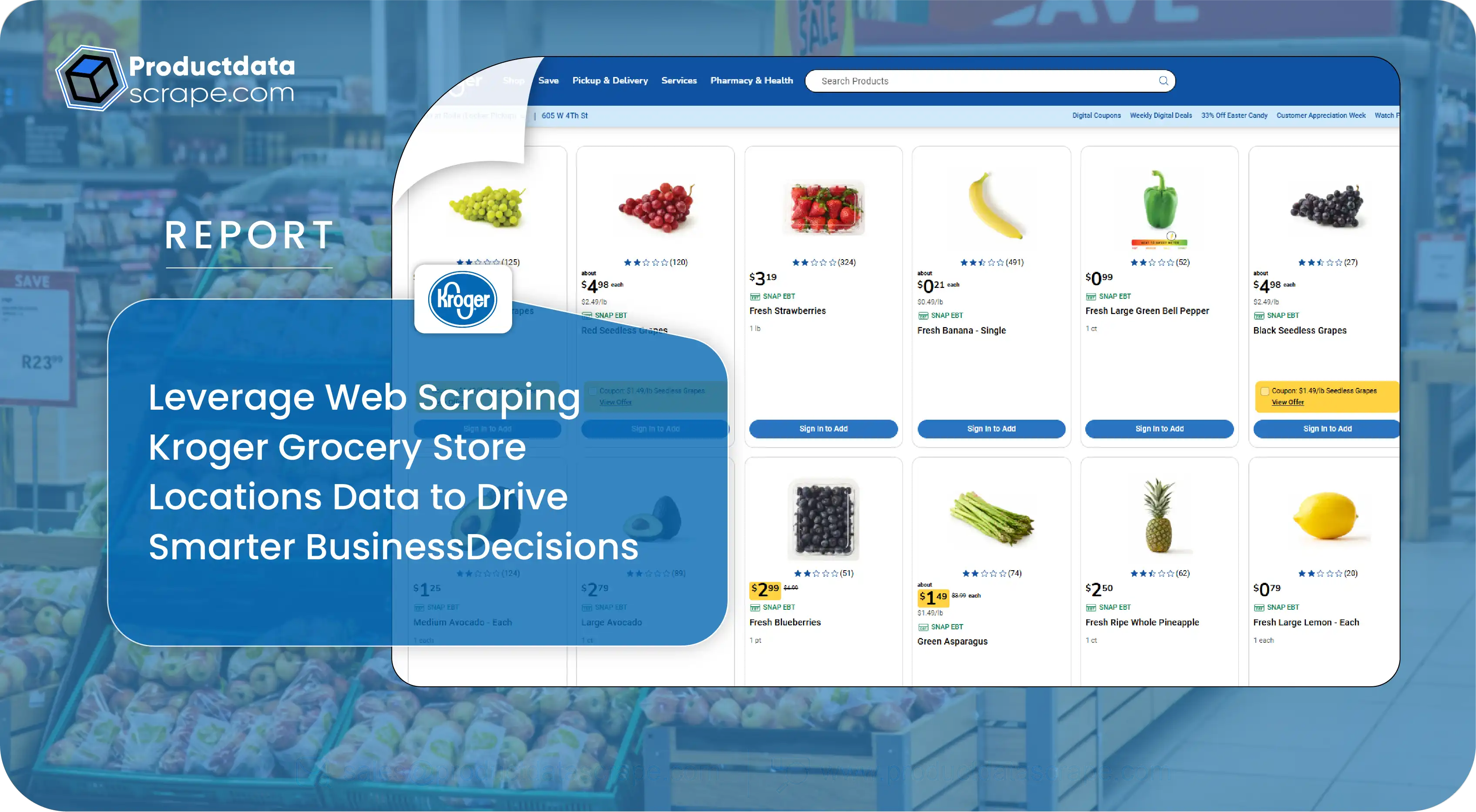
Introduction
Kroger, one of the largest retail grocery chains in the United States, operates over 4,000 stores across 42 states, making it a significant player in the grocery sector. With its extensive network of supermarkets, multi-department stores, pharmacies, and fuel centers, Kroger’s store location data provides valuable insights for businesses, researchers, and analysts. Web Scraping Kroger Grocery Store Locations Data has emerged as a powerful method for automating this publicly available information extraction.
Using advanced scraping tools, businesses can Extract Kroger Grocery Store Location Data to map regional coverage, analyze proximity to competitors, and identify expansion opportunities. This geospatial data proves invaluable for market analysis, logistics planning, and consumer behavior studies.
Moreover, Web Scraping Kroger Store Addresses and Competitor Data enables companies to access Kroger’s store network and compare it with rival retailers. This comparison supports strategic planning, retail optimization, and site selection decisions.
This report explores the methodologies, applications, and insights derived from such data extraction efforts, emphasizing the critical role of location data in competitive positioning. A sample dataset is also included to demonstrate the depth and variety of information that can be collected through web scraping techniques.
Importance of Kroger Store Location Data
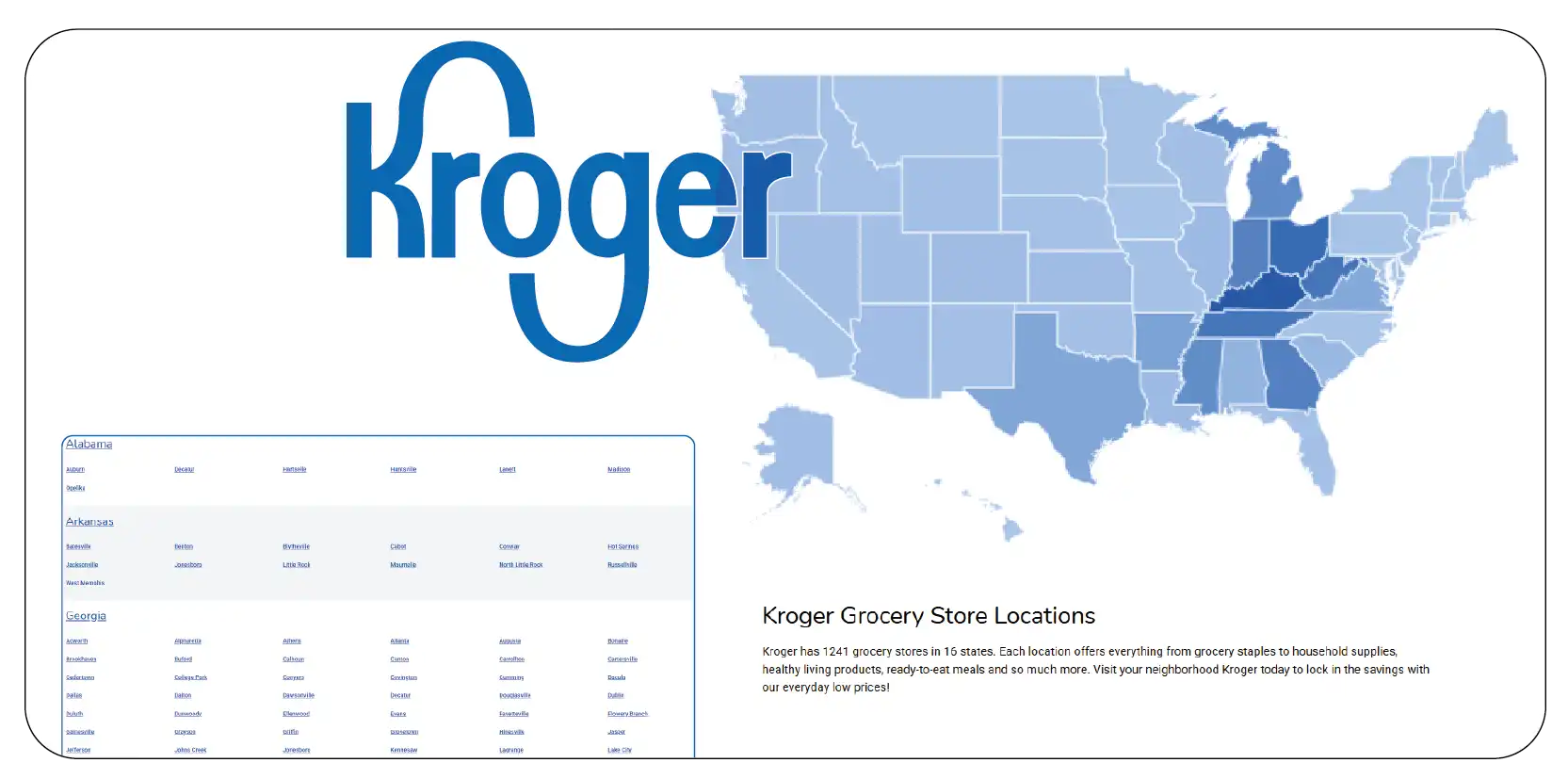
Kroger’s store location data encompasses critical details such as store addresses, phone numbers, operating hours, and additional services like pharmacies or fuel centers. This information is vital for various stakeholders, including retailers, supply chain managers, and market researchers. Web Scraping Kroger Supermarket Chains Data allows for the efficient collection of these details, enabling businesses to access reliable and structured data for strategic planning.
By analyzing the Kroger Grocery Store Location Dataset, businesses can identify market gaps, optimize distribution networks, and tailor offerings to regional preferences. The dataset is a foundation for geographic and demographic analysis, helping companies align their operations with local demand patterns.
For competitors, understanding Kroger’s store placement provides insights into its market dominance and strategic priorities. Companies can Scrape the Kroger Grocery Location Database for Analysis to benchmark performance, evaluate regional saturation, and explore opportunities for expansion or differentiation. With real-time updates and automation, web scraping ensures the collected data remains current, accurate, and actionable, supporting data-driven decision-making across various business functions.
Methodologies for Web Scraping Kroger Store Locations
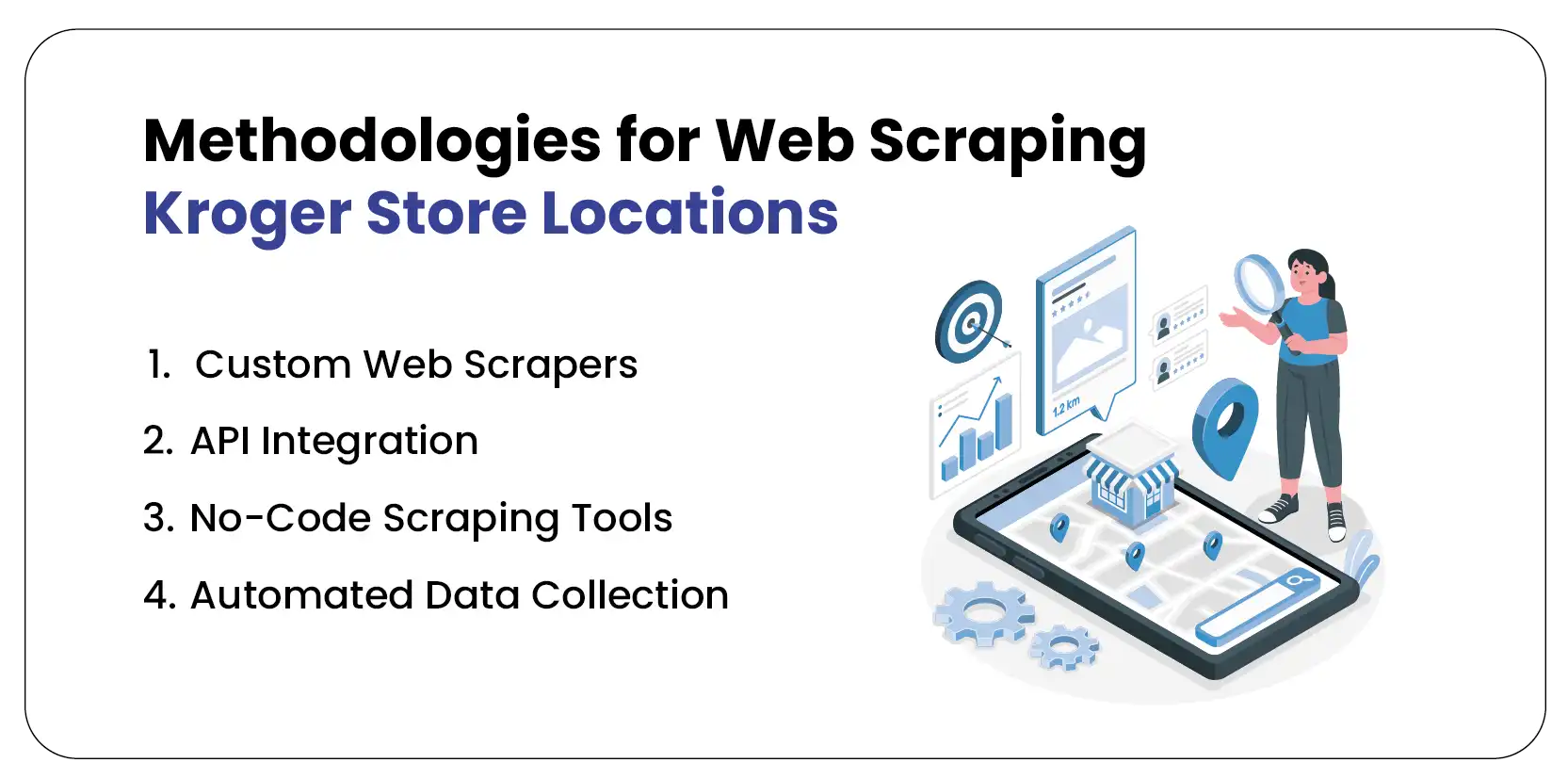
Web scraping Kroger store locations involves extracting data from Kroger’s official website, store locator pages, or related APIs. The methodologies employed are designed to ensure accuracy, scalability, and compliance with legal standards. Below is a concise overview of the key approaches:
- Custom Web Scrapers: Tools like Beautiful Soup and Scrapy navigate Kroger’s website structure, targeting store locator pages. These scripts extract data fields such as store names, addresses, and contact details by parsing HTML elements.
- API Integration: Kroger provides an official API for developers, which can be accessed with an API key. This method allows for direct, legal extraction of store location data in structured formats like JSON, bypassing traditional web scraping challenges.
- No-Code Scraping Tools: Platforms like ParseHub or Stevesie offer user-friendly interfaces for non-programmers to scrape Kroger’s store locator data and convert it into CSV or Excel files.
- Automated Data Collection: Scrapers are programmed to handle pagination, dynamic content, and regional filters, ensuring comprehensive data extraction across multiple states or cities.
These methodologies leverage advanced algorithms to collect data efficiently, with quality checks to ensure accuracy and relevance. The choice of method depends on the project’s scale, technical expertise, and data requirements.
Applications of Kroger Store Location Data
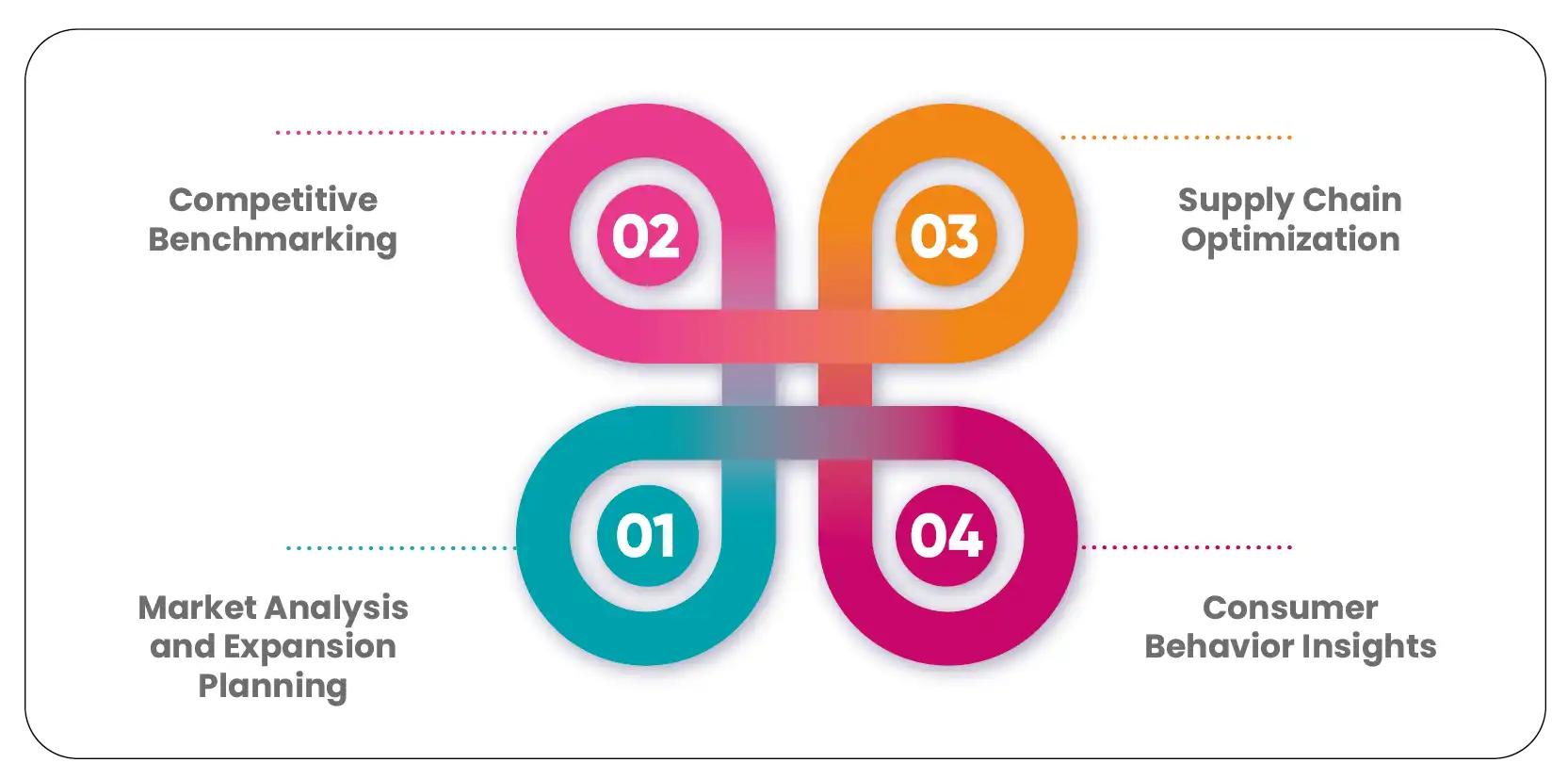
Kroger store location data offers valuable insights for businesses, enabling strategic decision-making across multiple domains. From market analysis and expansion planning to competitive benchmarking and supply chain optimization, this data supports informed strategies and enhances operational efficiency in retail.
- Market Analysis and Expansion Planning: Kroger’s store location data is instrumental in understanding its market presence and identifying expansion opportunities. By analyzing the geographic distribution of Kroger stores, businesses can pinpoint underserved regions or areas with high consumer demand. For instance, California, with 299 stores, and Texas, with 209 stores, represent key markets, while states like Delaware, with only four stores, may indicate untapped potential. This information, accessible through Kroger Store Locator Data Extraction Services, helps retailers plan new store openings, optimize logistics, and align inventory with local preferences.
- Competitive Benchmarking: Competitors such as Walmart, Target, or Amazon-owned Whole Foods can use
Extract Kroger Grocery & Gourmet Food Data to benchmark their geographic strategies. For example, Walmart operates in all 50 states, while Kroger is present in 42, suggesting differences in market penetration. By a
Web Scraping Kroger Data , competitors can assess store density in high-population areas like Los Angeles (36 stores) or Cincinnati (40 stores), informing their expansion and site selection strategies.
- Supply Chain Optimization: Store location data aids in optimizing supply chain operations by mapping distribution networks. Retailers can analyze Kroger’s store proximity to warehouses or suppliers to streamline logistics and reduce transportation costs. The Kroger Grocery Dataset provides structured insights to help predict demand for specific products, ensuring efficient inventory planning and resource allocation.
- Consumer Behavior Insights: Location-based data provides insights into consumer preferences by region. For example, Kroger’s strong presence in Ohio (204 stores) may reflect local brand loyalty or demographic trends. By combining store location data with customer reviews or sales data, businesses can tailor marketing campaigns to regional tastes, improving customer satisfaction and market effectiveness.
Insights from Kroger Store Location Data
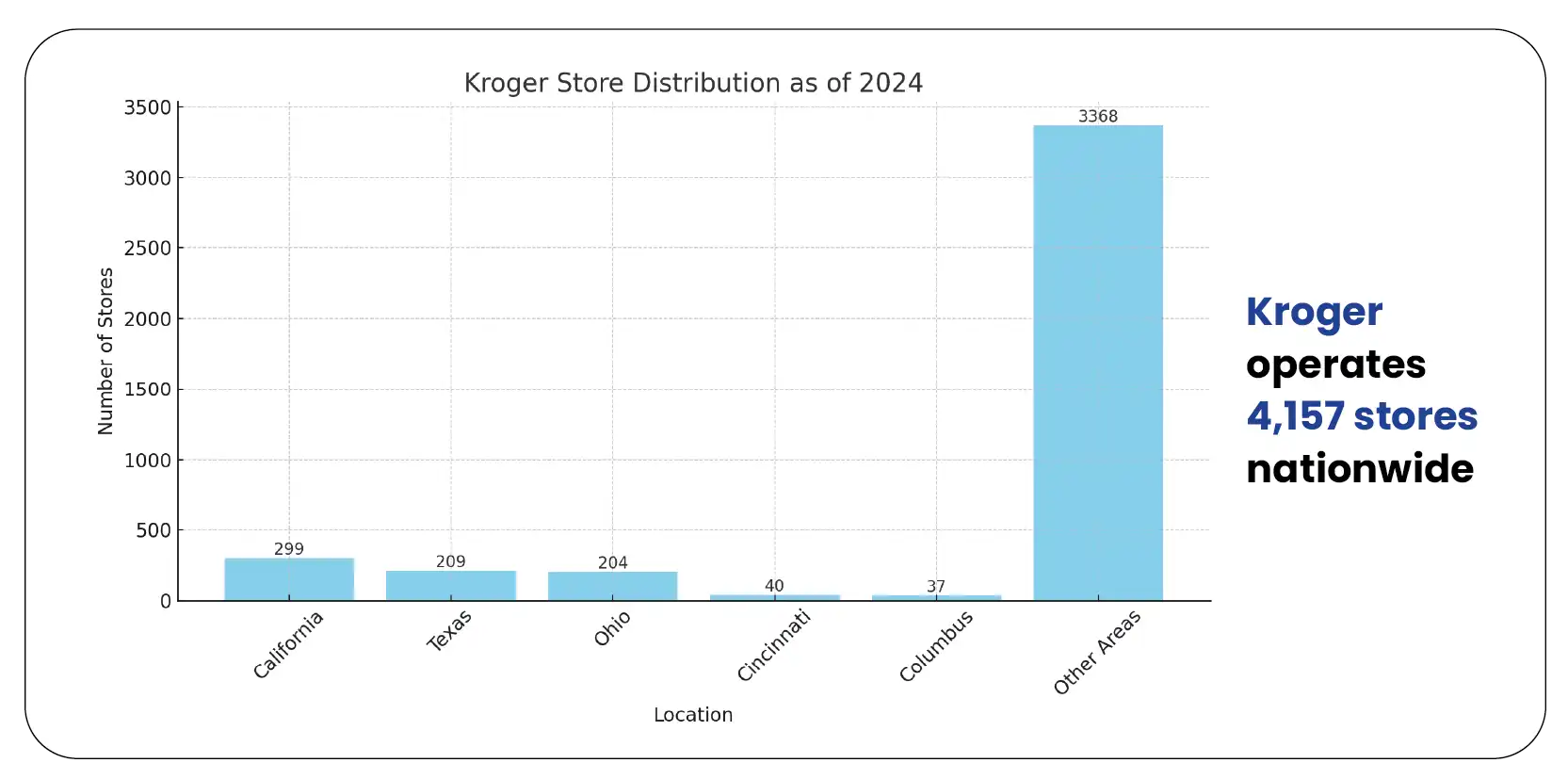
Geographic Distribution
As of 2024, Kroger operates 4,157 stores nationwide, predominantly in the Midwestern and Southern regions. California leads with 299 stores, followed by Texas (209) and Ohio (204). Cities like Cincinnati (40 stores) and Columbus (37 stores) in Ohio highlight Kroger’s strong foothold in its home state. This distribution underscores Kroger’s focus on high-population states and urban centers, aligning with consumer demand and economic activity.
Banner Diversity
Kroger operates under multiple banners, including Kroger, Harris Teeter, Fred Meyer, and Smith’s. The Kroger banner has the most stores, while Harris Teeter leads in pharmacies (214 locations). This diversity allows Kroger to cater to varied consumer needs, from traditional groceries to specialized services like pharmacies or fuel centers.
Strategic Partnerships
Kroger’s partnership with Ocado to build automated grocery warehouses and its collaboration with Microsoft Azure for digital shelves reflect a technology-driven approach to store efficiency. Store location data can reveal how these innovations are deployed, particularly in high-density markets like California or Texas.
Market Share and Competition
Kroger’s 4,157 stores make it the second-largest retailer after Walmart, which operates in all 50 states. However, Kroger’s acquisition of over 27 chains has expanded its footprint without new store openings, a strategy that competitors may emulate. The data also highlights Kroger’s competition with Amazon-backed Whole Foods, particularly in urban markets.
Sample Kroger Store Location Dataset
The following table presents a sample dataset of Kroger store locations extracted via web scraping, illustrating the type of data available:
| Store ID |
Store Name |
Address |
City |
State |
ZIP Code |
Phone Number |
Operating Hours |
Banner |
Ratings |
| 1 |
Kroger Store 1 |
123 Main St |
Los Angeles |
CA |
90001 |
(213) 456-7890 |
Open 24 Hours |
Kroger |
4.5 |
| 2 |
Kroger Store 2 |
456 Elm St |
Houston |
TX |
77002 |
(713) 789-1234 |
Open Until 9:00 PM |
Harris Teeter |
4.2 |
| 3 |
Kroger Store 3 |
789 Oak St |
Cincinnati |
OH |
45202 |
(513) 567-8901 |
Open 24 Hours |
Kroger |
4.8 |
| 4 |
Kroger Store 4 |
101 Pine St |
Charlotte |
NC |
28201 |
(704) 345-6789 |
Open Until 10:00 PM |
Fred Meyer |
4.3 |
| 5 |
Kroger Store 5 |
202 Maple St |
Columbus |
OH |
43215 |
(614) 234-5678 |
Open 24 Hours |
Kroger |
4.7 |
Table 1: Sample Kroger Store Location Data
This dataset includes key fields such as store ID, name, address, city, state, ZIP code, phone number, operating hours, banner, and ratings. Such data can be scaled to include thousands of stores, providing a comprehensive view of Kroger’s network.
Future Directions
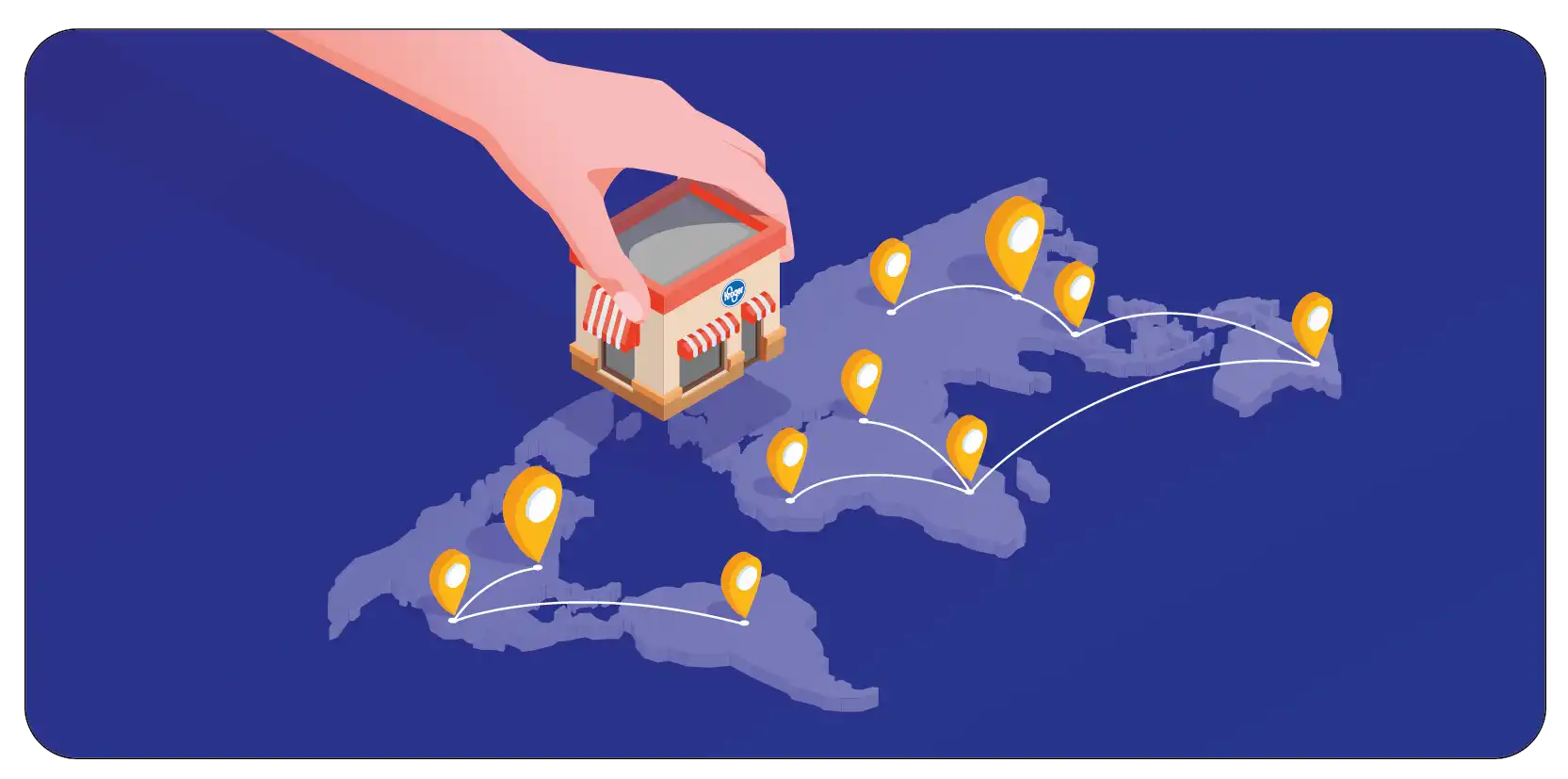
The future of web scraping Kroger store location data lies in integrating real-time updates and advanced analytics. As Kroger expands its digital presence through partnerships with technology firms, scraping tools must adapt to capture dynamic data, such as same-day delivery availability or automated warehouse locations. The Kroger Grocery Data Scraping API will enable seamless, structured data extraction. Machine learning models can enhance data analysis by predicting optimal store locations or identifying emerging consumer trends. Additionally, combining store location data with other datasets, such as an Grocery Product Prices Dataset or customer reviews, can provide deeper insights into Kroger’s market dynamics.
Conclusion
Web scraping Kroger grocery store location data offers a robust method for extracting valuable insights into one of the largest retail chains in the United States. Businesses can collect accurate, structured data to support market analysis, competitive benchmarking, and supply chain optimization by leveraging methodologies like custom scrapers, API integration, and no-code tools. As part of Grocery Data Scraping Services , this process helps Extract Popular Grocery Website Data efficiently. The sample dataset illustrates the richness of information available, from store addresses to operating hours and banners. Web Scraping Grocery like Kroger will remain critical for unlocking actionable insights, driving strategic decisions, and maintaining a competitive edge in the grocery industry.
At Product Data Scrape, we strongly emphasize ethical practices across all our services,
including Competitor Price Monitoring and Mobile App Data Scraping. Our commitment to
transparency and integrity is at the heart of everything we do. With a global presence and a
focus on personalized solutions, we aim to exceed client expectations and drive success in data
analytics. Our dedication to ethical principles ensures that our operations are both responsible
and effective.









